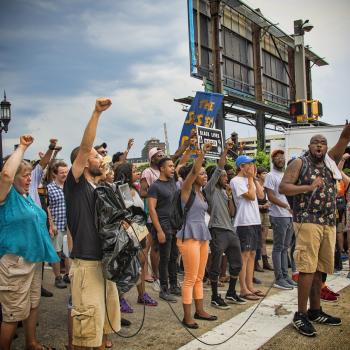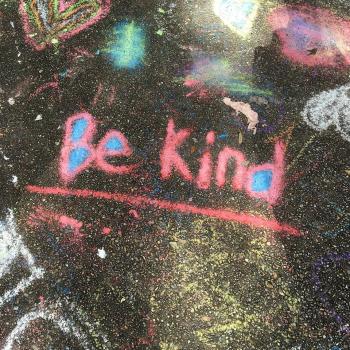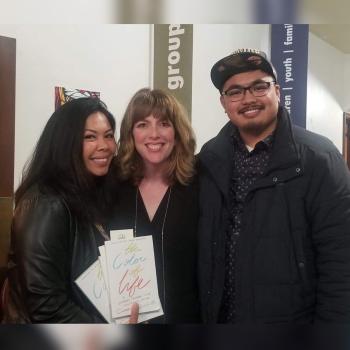When I was a little girl, I thought all my teachers lived in their classrooms. I remember peeking around the side of the coat closet to see if I could find their bedroom, the space they went to at the end of the school day to rest and relax so they could become my teacher again in the morning.

When I was a little girl, I thought everyone went to church. Because church was what we did – and because the church people were our people and the place where we found our deepest sense of belonging outside of our family – I figured everyone else believed in that Big Guy in the sky, too, because who wouldn’t want to hang out amongst the pearly gates after they died?
And when I was a little girl, I didn’t find it abnormal that most everyone in my world looked like me and kind of acted like me too. As I write about in my book, I didn’t think it out of the realm of normalcy that my Jesus mostly looked like me, that the characters in the books I read mostly looked like me, that the stories of history came from people who mostly looked like me too. Because we all mostly looked alike, I didn’t think issues of race had anything to do with us.
I didn’t believe any of this out of the norm because that lethal combination of magical thinking and not knowing any better also meant that I even fathomed how there might be another way of thinking and engaging and living in this world.
Later, of course, I would learn teachers actually had real lives apart from our classroom and lived in real houses and apartments not on school grounds. I would find out that different religions often co-exist alongside one another, the gifts of holy envy (as Barbara Brown Taylor calls it) ours for the taking if we simply take the time to get to know the stories and voices of those who believe differently from us. And, when it came to conversations of race and racism alike, I realized that conversations of race and racism most definitely pertained to me, exactly because of the color of my skin.
As you may recall, I took the month of July off. And friends, it was glorious. It was full of rest and light and laughter, although it also held a fair amount of exhaustion when hanging out with my children, without so much as a camp or a babysitter, proved easier said than done …but that’s also when I would remind myself that I had nothing to do but be present with the two little boys who brought on said exhaustion, therefore, eventually, bringing me full circle back to a place of rest and light and laughter.
But my time away didn’t mean that I didn’t relish in a fair amount of reading, and seventeen books later, I laughed at the absurdity (and the privilege) of choosing to pick up a book instead of login onto Twitter every five minutes. And try as I might to not think about work, my work involves thinking about what it means to color outside the lines, so I found myself utterly grateful for a handful of books brought me to that very place.
In Open Hands, Willing Heart, author Vivian Mabuni exhorts the reader to rewrite old narratives, including old narratives of race and racism alike:
The vast majority of my white sisters do not engage in using racial slurs or march around wearing white KKK hoods, so they don’t think the conversation about racism is pertinent to them. But what I’m referring to is a structure of racism that normalizes the white experience as the superior narrative.
Now, were you and I to sit across the table from Vivian, I’m guessing she’d probably tell us that she took a risk including the chapter “Building Bridges, Not Walls” in a book that’s mostly about issues of the heart.
But conversations about racism – including structures of racism that normalize the white experience as the superior narrative – is an issue of the heart. While some might label conversations like this political and therefore another form of “social gospel,” there’s no getting around the fact that conversations of racism are about issues of the heart, because conversations of racism are about the way we treat real, live human beings.
And as long as humans keep being humans, all those beating hearts and pumping blood vessels will only continue to be a glorious indicator of our stamp of humanity.
At the end of the day, we might find out that we’re the ones in need of an annual check-up – that this journey of examining where we stand when it comes to conversations of justice, race and privilege, is in need of a bit of upkeep. We might have to do some work. We might have to say I’m sorry and practice empathy and turn our ears more towards listening than our mouths toward speaking.
But I dare say it also might be just the appointment we need to make – with ourselves and with the one who stamped us in and with that glorious image in the first place.
So, care to join me?
—
Friends, if you want to join me on a journey of discovery, consider reading Robin DiAngelou’s What Does It Mean to be White? and Clayborne Carson’s The Autobiography of Martin Luther King, Jr. alongside me. No matter who you are, it’s powerful stuff to do the work, whether for the first time or the thousandth time. In this with you!












